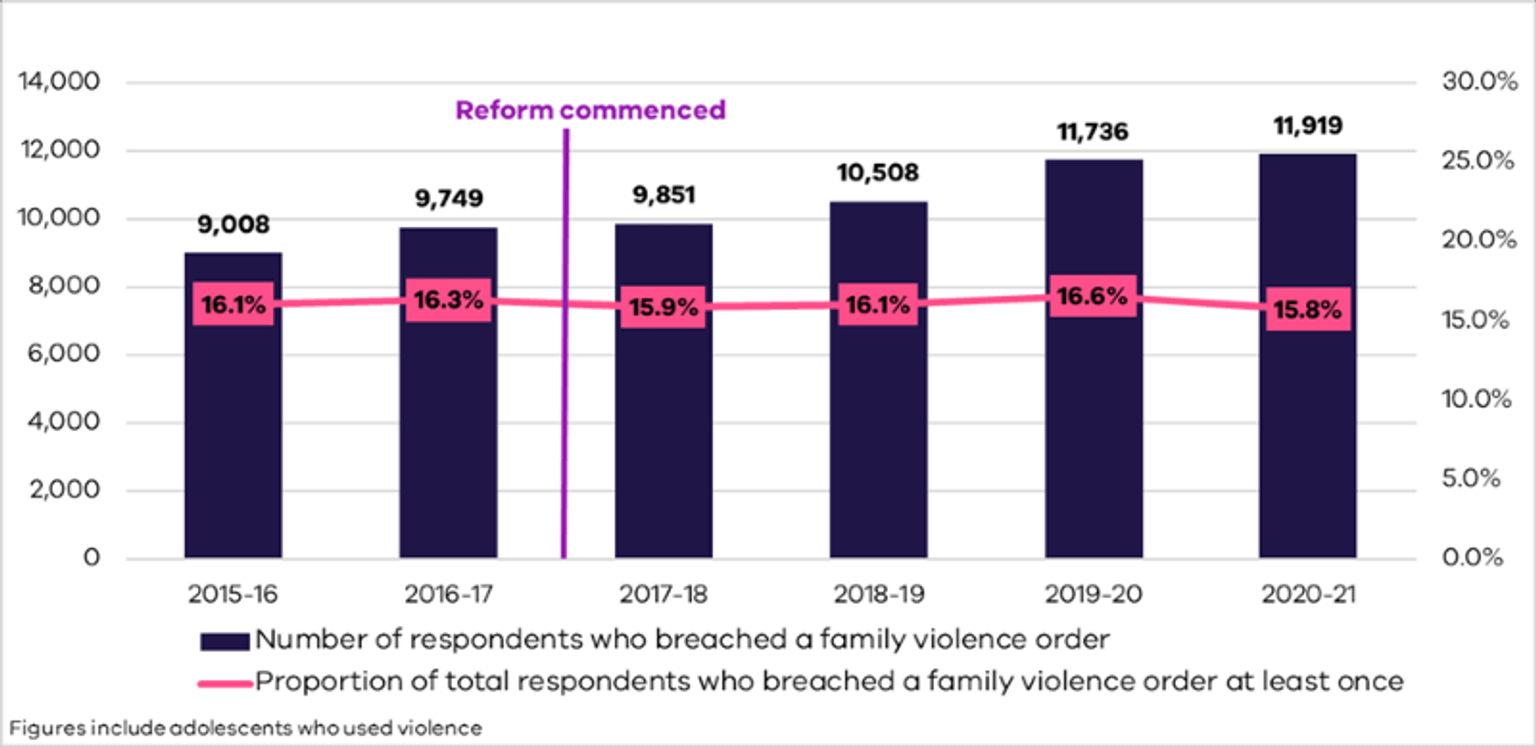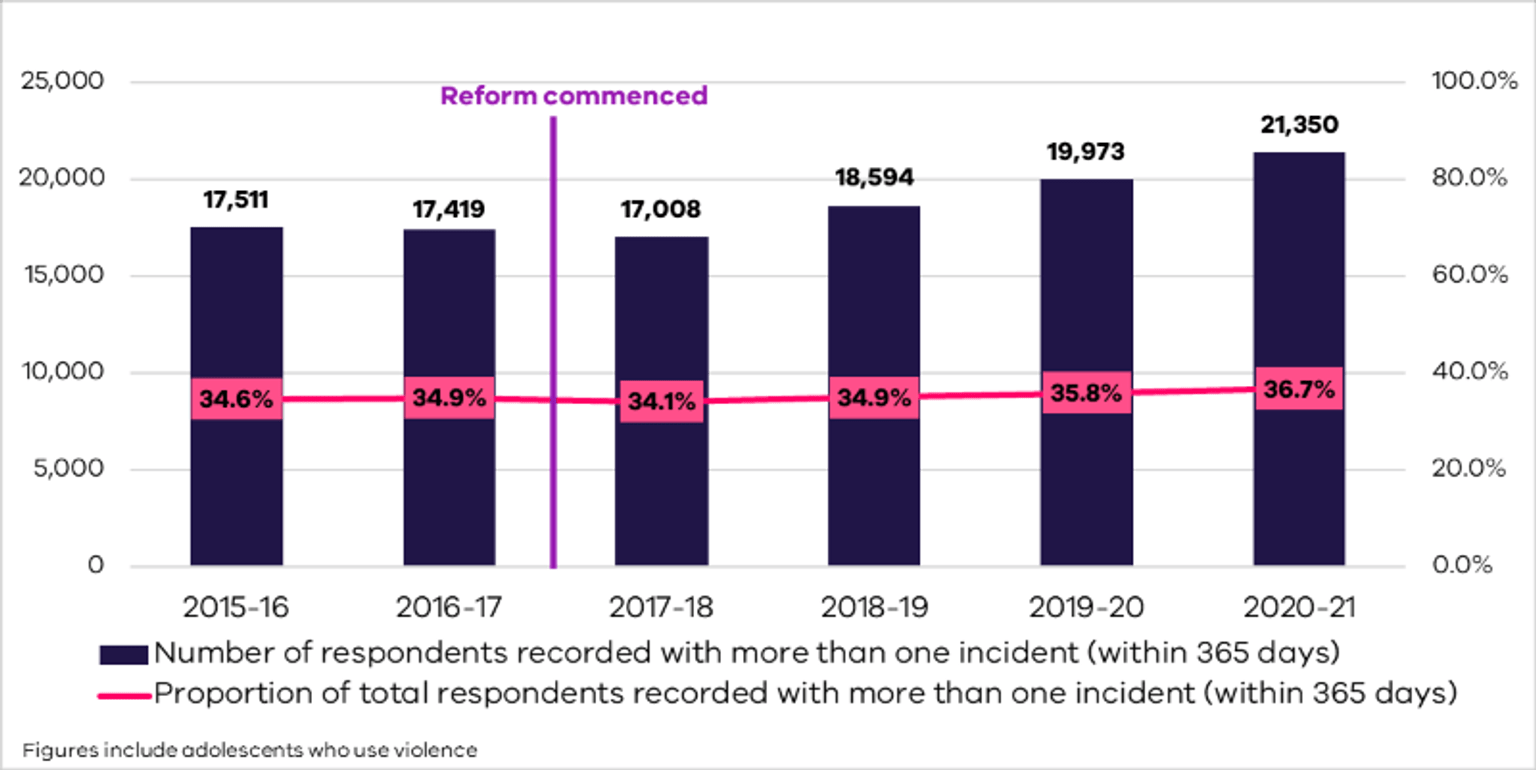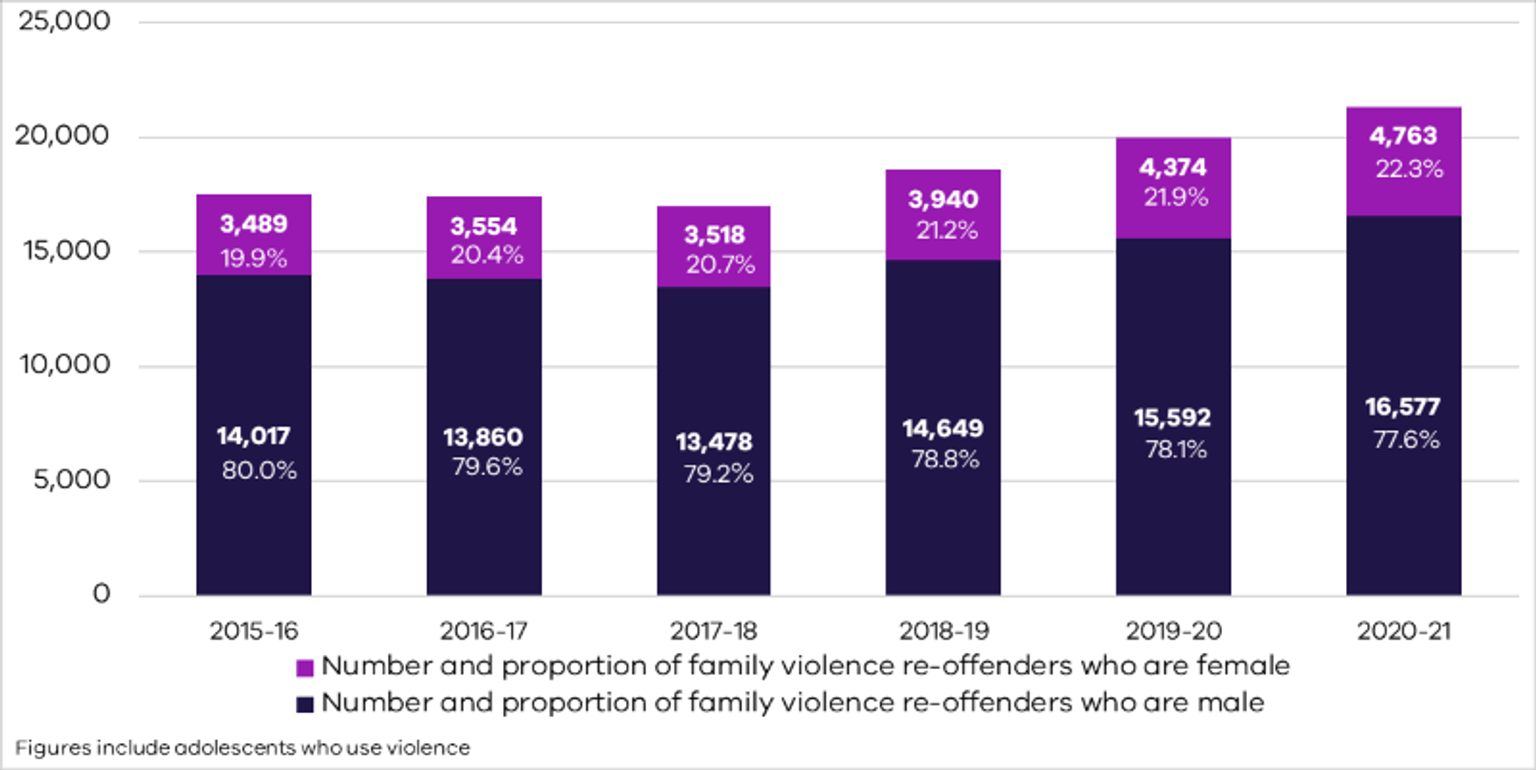Indicator: Reduction in all family violence behaviours
Measure: Number/proportion of reported contraventions of Family Violence orders
Family violence orders are a key mechanism to help keep victim survivors, including children, safe and hold perpetrators accountable. Perpetrators who breach an order can be charged with a criminal offence.
Most people on a family violence order1, 2 are not recorded by police for a breach of order offence. In 2020–21, 63,711, or 84.2 per cent of people on an active order were not recorded with a breach.
Although most people do not breach, in 2020-21, 11,919 people were recorded with at least one breach of a family violence order. This was an increase from 9,008 in 2015–16.
Despite the increase in numbers, the proportion of people who breach a family violence order has remained consistent (between 15.8–16.6 per cent) during this time.
Proportion of people on a family violence protection order who breach the order - by number of breaches - 2015-16 to 2020-21
| Family violence protection orders and breaches | 2015-16 | 2016-17 | 2017-18 | 2018-19 | 2019-20 | 2020-21 |
|---|---|---|---|---|---|---|
| Number of people on active family violence protection order breaches | 56,047 | 59,772 | 62,045 | 65,460 | 70,799 | 75,630 |
| 0 (did not breach) | 83.9% | 83.7% | 84.1% | 83.9% | 83.4% | 84.2% |
| 1 breach | 7.6% | 7.3% | 7.0% | 7.0% | 7.3% | 6.6% |
| 2 breaches | 2.9% | 2.9% | 3.0% | 3.0% | 3.0% | 2.8% |
| 3 breaches | 1.5% | 1.5% | 1.3% | 1.3% | 1.4% | 1.3% |
| 4 breaches | 0.9% | 1.1% | 1.0% | 1.1% | 1.0% | 1.0% |
| 5 or more breaches | 3.2% | 3.5% | 3.6% | 3.7% | 3.8% | 4.1% |
| Proportion of people who breached (combined) | 16.1% | 16.3% | 15.9% | 16.1% | 16.6% | 15.8% |
Source: Victoria Police LEAP data collected by Crime Statistics Agency
Measure: Number/proportion of individuals identified as the respondent in an L17 report who receive a subsequent L17 report within 12 months
In 2020–21, just over one-third of respondents (36.7 per cent) were associated with more than one family violence incident over a 365-day period.
The proportion of unique respondents with more than one family violence incident has not changed substantially over time.
During the six-year period, male respondents were more likely to be recorded with subsequent incidents.
Notes
1The figures in this measure refer to people on orders including a family violence intervention order, interim family violence intervention order and/or a family violence safety notice.
2A person can be on more than one active order within the reference period.
Updated


